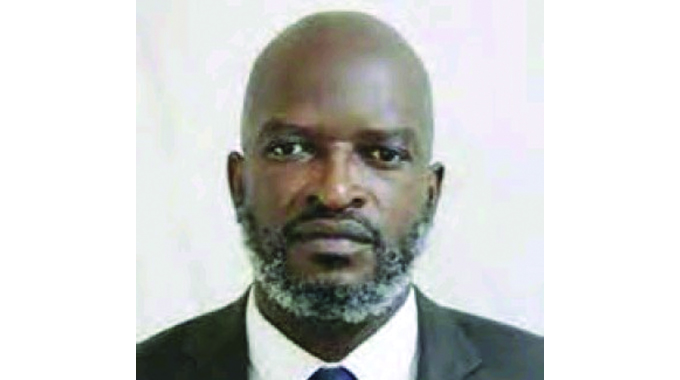the herald
Ivan Zhakata Herald Correspondent
ZIMBABWE continues to have high literacy rates, with 93.7% of people aged 15 and above who have completed at least grade three being classified as literate.
The country is poised to retain its status as one of the most literate nations on the African continent.
According to the Zimbabwe National Statistics Agency (ZimStats), Zimbabwe has had a literacy rate of over 90% since 1992. The literacy rate is defined as the percentage of the population in a given age group who can read and write.
In 1992 the country had a literacy rate of 96%, in 2002 it was 97% and in 2012 the country was 94%.
Announcing the preliminary results of the 2022 Population and Housing Census on Education, ZimStat Director General Mr. Taguma Mahonde said that a total of 13,466,067 people aged 4 and above were enrolled in school.
“The national literacy rate stood at 93.7%, with urban areas having a literacy rate of 97.1% and rural areas at 91.3%,” Mahonde said.
“The population aged 15 or over who had completed at least Grade 3 was classified as literate. The literacy rate by gender was 95.2% for men and 92.4% for women.
“Bulawayo with 98.9% and Harare with 97.5% had the highest literacy rates. In the other provinces, Mashonaland East had 94.4%, Matabeleland South 93.4% and Masvingo: 91.5%.
Mr Mahonde said there were marginal differences in the proportions of men and women who had ever attended school, with men having 95.4% and women having 93.9%.
He said that in both urban and rural areas, women make up the largest proportion of people who have ever attended school. Mr. Mahonde said that in rural areas, 51% of those who attended school were women, while in urban areas the proportion was 53%. This is largely because there are more women than men in the overall population. Bulawayo at 97.6% and Harare province at 97.3% had the highest proportions of people aged 4 and above who have ever attended school, he said.
In both rural and urban areas, Mr. Mahonde said the main reasons for never attending school were financial constraints, education not considered valid, still too young, school too far away, lack of birth certificate and religion among others for both sexes.
“Out of 6,886,403 in the school age group of 4-24 years, 71.4 percent were attending school and out of 3,387,501 men, 72.7 percent were currently attending school while out of 3,498,902 women , 70.2 percent were currently attending school. school.
“Of the 4,297,021 people between the ages of 4 and 24, 72% were currently attending school in rural areas while 70% of the 2,589,382 people in urban areas were currently attending school,” he said.
Mr. Mahonde said school attendance of the population aged 4 to 24 stood at 67.3 per cent nationally, with primary level standing at 95.9 per cent while in lower secondary, he stood at 83%.
“School attendance was highest in the provinces of Masvingo and Manicaland, with 71.6% and 70.6% attendance respectively. The proportions of school-aged children who were out of school were higher for boys than for girls in both primary and lower secondary education.
He indicated that the main areas of specialization at the tertiary level were: commerce, administration and law, education, engineering, manufacturing and construction.
“For men, the main field of specialization was engineering, manufacturing and construction, which accounted for 25.2% of the total. For women, education was the main field of specialization with 27.6% of the total.
“A total of 663,320 people had a higher education degree, of which 342,975 were men. At all levels, net enrollment was lower in rural areas than in urban areas. The gross enrollment rate was higher in urban areas than in rural areas for both lower and upper secondary levels,” Mr. Mahonde said.
He said the importance of education statistics was for policy formulation and evaluation, informed planning and resource allocation and monitoring of national, regional and international obligations such as NDS1, Agenda 2063 and the Sustainable Development Goals.
Educators hailed the findings saying they will help inform decisions by policy makers and academia.
Ms. Joelle Ayite, Head of Education of Unicef commended Zimstats for releasing the statistics.
“I am happy to have the information and I am happy that the gender issue is also included in the report. I look forward to using the report in my research,” she said.
Acting Vice Chancellor of Great Zimbabwe University, Dr. Eriyoti Chikodza also applauded ZimStat for carrying out the exercise in line with the constitutional mandate.
“It contains scientific information for planning for us as educators. I would have expected a bit of detail explaining the technical terms. I’m also happy that ZimStats gives results on completion rates. I found the results quite useful and detailed,” he said.
Mr. Moses Mukabeta, National Education Sector Manager of Unesco, also congratulated ZimStats for releasing the results.
“It makes the information practical for policy makers and academics. I’m glad our numbers are going up, especially in ECD (early childhood development) and that’s commendable and important, but we still want to push it up so kids get to primary school with basic learnings .

